If God instructed Noah to house and care for two of each kind of land-dependent animal on an Ark during the Flood, Noah must have included dinosaurs. This might give some pause. Although the Ark was huge, the question still remains as to how he was able to fit these gigantic creatures onboard. Is it even possible? Recent research by a pair of creation scientists aims to solve this mystery by figuring out what the average size of a dinosaur really was.
The following article is a summary of “Determining Average Dinosaur Size Using the Most Recent Comprehensive Body Mass Data Set,” by Tim Clarey & Jeffrey Tompkins, and of the surrounding discussion and research pertaining to it. The views expressed do not necessarily reflect those of New Creation.

Over the past several decades, there has been no shortage of assertions for the average size of a dinosaur. The problem is that virtually none of these have been based on actual, rigorous scientific studies. As far as technical literature is concerned, many have leaned on paleontologists Drs. Jack Horner and Don Lessem’s work, The Complete T. rex (1993). They state that the average dinosaur was no bigger than a bull. Others have gone so far as to cite non-scientific literature such as Michael Crichton’s novel The Lost World (1995), a sequel to his more famous book, Jurassic Park (1990). When one of the characters is surprised by the sighting of the chicken-sized Compsognathus, Dr. Ian Malcolm explains that small dinosaurs are not unusual, as the average dinosaur is the size of a sheep or a small pony.
When trying to figure out how dinosaurs could have fit on the Ark, creationists have borrowed from both sources. However, in 2015, geologist Dr. Tim Clarey and Dr. Jeffrey Tompkins published a study in the Answers Research Journal that attempts to quantify the average size of a dinosaur.1
How Do We Know There Were Dinosaurs on the Ark?
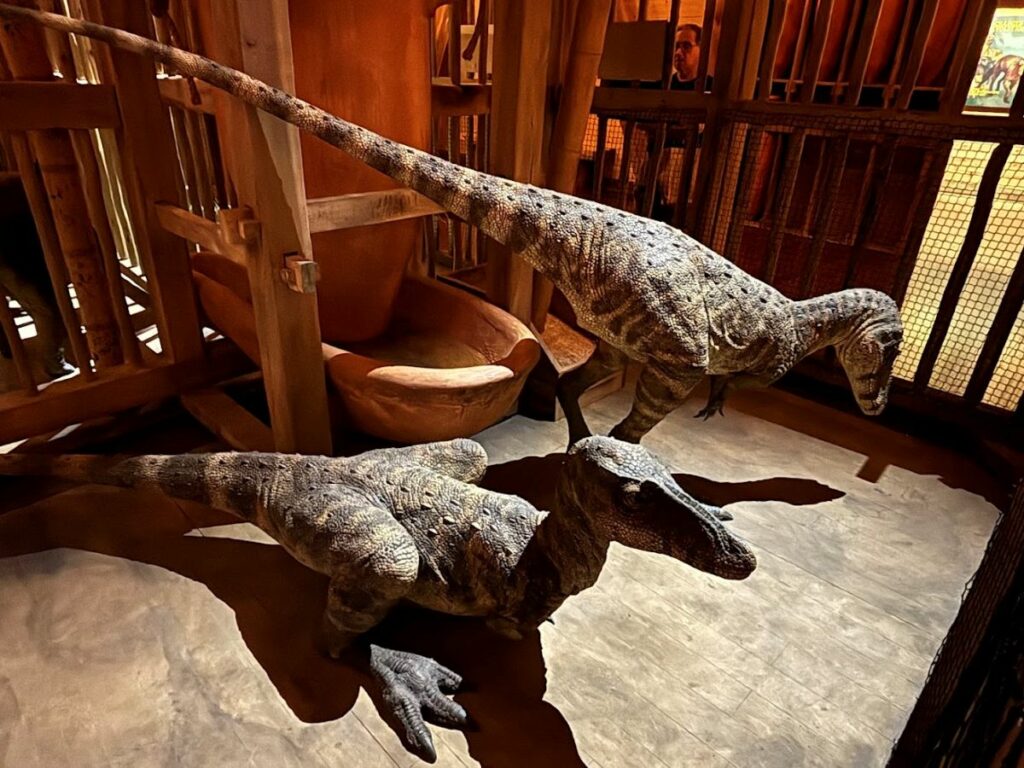
Many Christians do not think dinosaurs were present on Noah’s Ark because they went extinct tens of millions of years before humans came onto the scene. From a biblical Genesis perspective, however, God created all land animals according to their kinds on the 6th day of Creation Week just a few thousand years ago (Genesis 1:24). Since dinosaurs are land animals, this would have included them as well.
Likewise, the Bible does not specifically mention dinosaurs in its account of Noah’s Flood (it mentions very few animals specifically). However, it records that God brought at least two of each kind of land-dependent animal aboard the Ark (Genesis 6:19). This means that dinosaurs would have been among the animal passengers on the Ark.
Tallying Up the Dinos
To date, there are some 1,350+ dinosaur species known to science, with new ones being discovered every year. However, we can categorize all of these dinosaurs into five main groups called suborders.
Theropoda
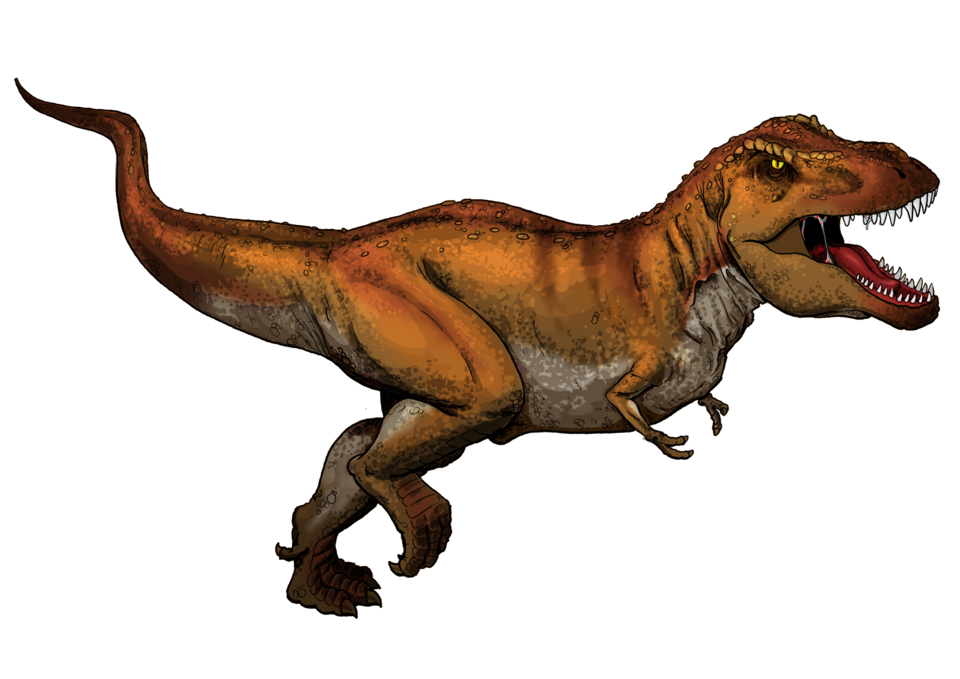
This group includes all of the meat-eating dinosaurs. Every known species within this suborder walked on two legs. They ranged from the pigeon-sized Yi qi to Tyrannosaurus, which weighed more than an elephant.
Sauropodomorpha
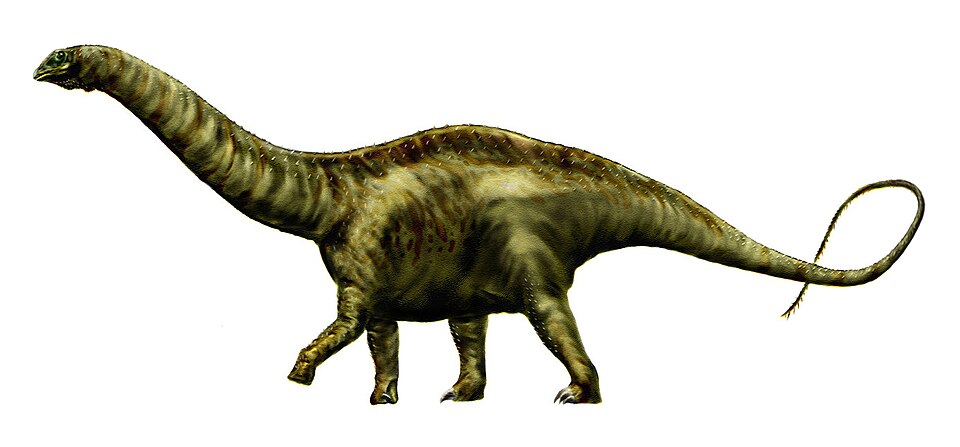
Most of the animals within this suborder are sauropods, the long-necked, four-legged dinosaurs. These were the largest land animals to have ever lived. The incomplete nature of the fossil specimens prevents us from knowing which species was the largest. However, one of the most completely fossilized contenders was Patagotitan, weighing more than 60 tons and measuring over a hundred feet in length. The so-called prosauropods were also members of Sauropodomorpha. Unlike the sauropods, these animals were much smaller and often walked on two legs.
Marginocephalia
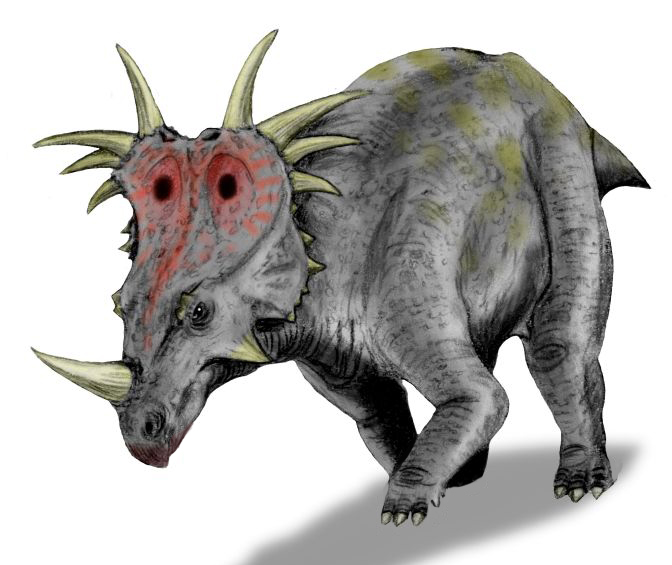
There are two main groups within this suborder: Ceratopsians (the horned dinosaurs) and the pachycephalosaurs (the dome-headed dinosaurs). While most ceratopsians walked on four legs and had a bony frill around their necks, like Triceratops, some species, like Psittacosaurus, got around on just two legs. They had various horn arrangements on their face and around their frills. The pachycephalosaurs, on the other hand, were completely two-legged. Many species, like Pachycephalosaurus itself, had a large dome on their skulls made of solid bone.
Thyreophora
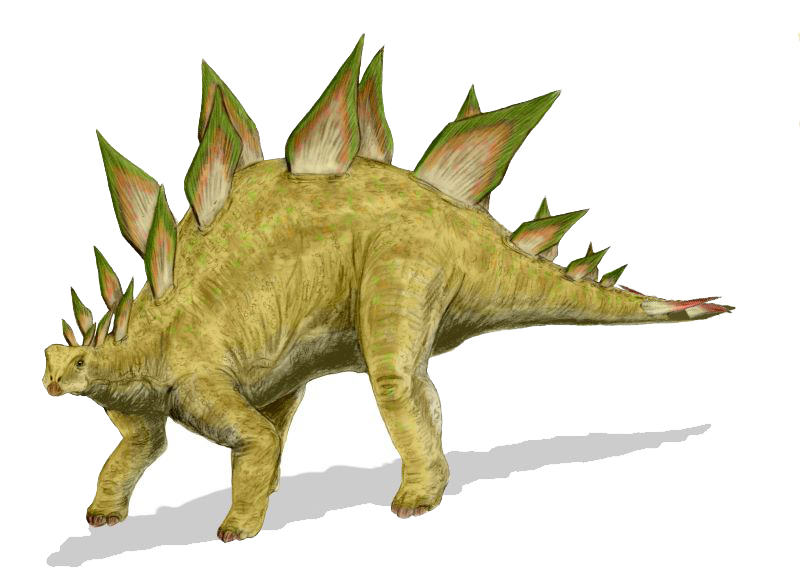
There are two main types of thyreophorans: the stegosaurs and ankylosaurs. Stegosaurs are well-known for their spiked tails and plates running down their backs. The exact arrangement varied from species to species. The ankylosaurs were the dinosaur equivalent of tanks. These low-slung dinosaurs were covered in bony armor-plating. Some species, like Ankylosaurus, had a large club on the end of their tails for defense. Most of the dinosaurs in this suborder walked around on four legs.
Ornithopoda
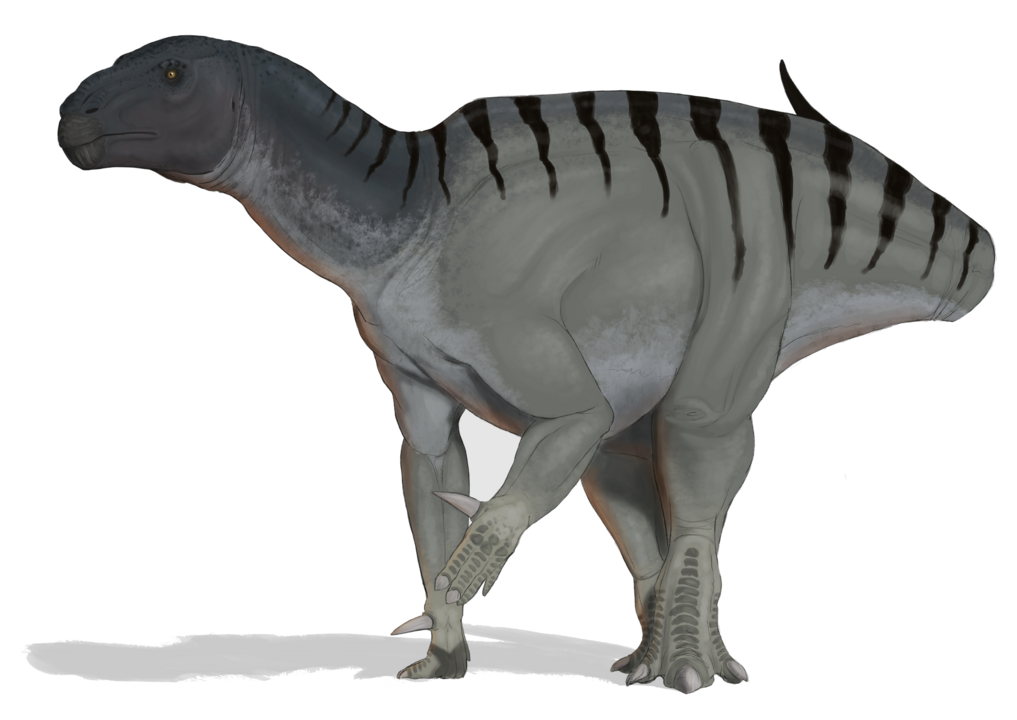
All remaining varieties of plant-eating dinosaurs belonged to this suborder. This included little, speedy dinosaurs like Leaellynasaura, but also much larger creatures such as the duck-billed hadrosaurs. Many of the dinosaurs in this suborder walked on two legs all of the time, but some could alternate between two legs and all fours when they wanted to move at a slower pace.
Settling the Debate on Dinosaur Weight
Without a living dinosaur to place on a scale, scientists can have some difficulty figuring out how much these animals weighed. One way to estimate the weight of a dinosaur is by measuring the circumference of its large, weight-bearing bones. Often used are leg bones, such as the femur and humerus. For their study, Clarey and Tompkins used a list of species published in 2014. This list includes not only dinosaur species names, but their mass estimate (in kilograms) if leg bone material was available, and in which layer they occur in the geologic record.
Clarey and Tompkins did not use the entire dataset, as they excluded birds and five bird-like dinosaur species, such as Microraptor. They also excluded species that were not provided a mass estimate due to missing leg bone material. This dropped their final species count to 350 dinosaurs. (Most species of dinosaurs are known from notoriously incomplete skeletons).
They also took care to record which rock layer of the geologic column from which we know the dinosaur species. Then, they sorted them (from lowest to highest) into six categories: Upper Triassic, Lower Jurassic, Middle Jurassic, Upper Jurassic, Lower Cretaceous, and Upper Cretaceous. This information would be useful later, as the researchers wanted to see if a recognizable pattern emerged from the dataset. Do dinosaurs of a certain size occur throughout the dinosaur fossil record? Or do they tend to occur later or earlier? Answering these questions may help them figure out what factors were responsible for the order in which the various dinosaur species occur.
Very Small, or Very Big…But Not Much in Between
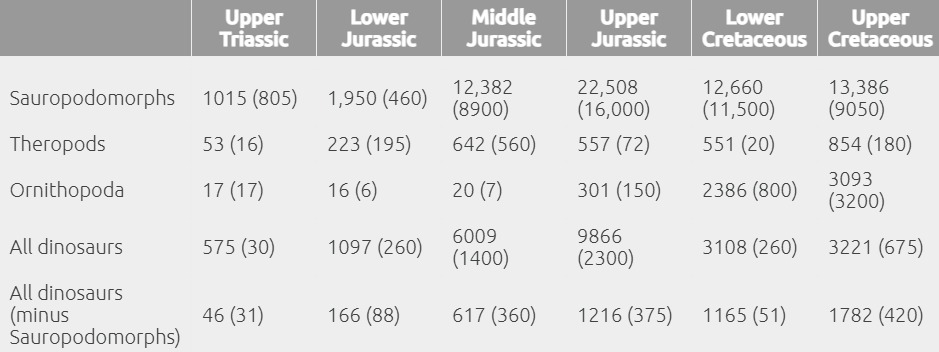
It did not surprise Clarey and Tompkins that dinosaurs had such a wide range in size. What did surprise them, however, was that most dinosaurs in the study turned out to either be very small (under 130 lbs.) or very big (over 2,380 lbs), with medium-sized dinosaurs being the least common.
Dinosaurs weighing less than 22 lbs. (<10 kg) were present in every major group of dinosaurs except Thyreophora; this is the group containing the “armored” dinosaurs, such as Ankylosaurus and Stegosaurus. The smallest dinosaur in the analysis only weighed 0.3 lbs. (0.14 kg), while the largest was 123,459 lbs. (56,000 kg).
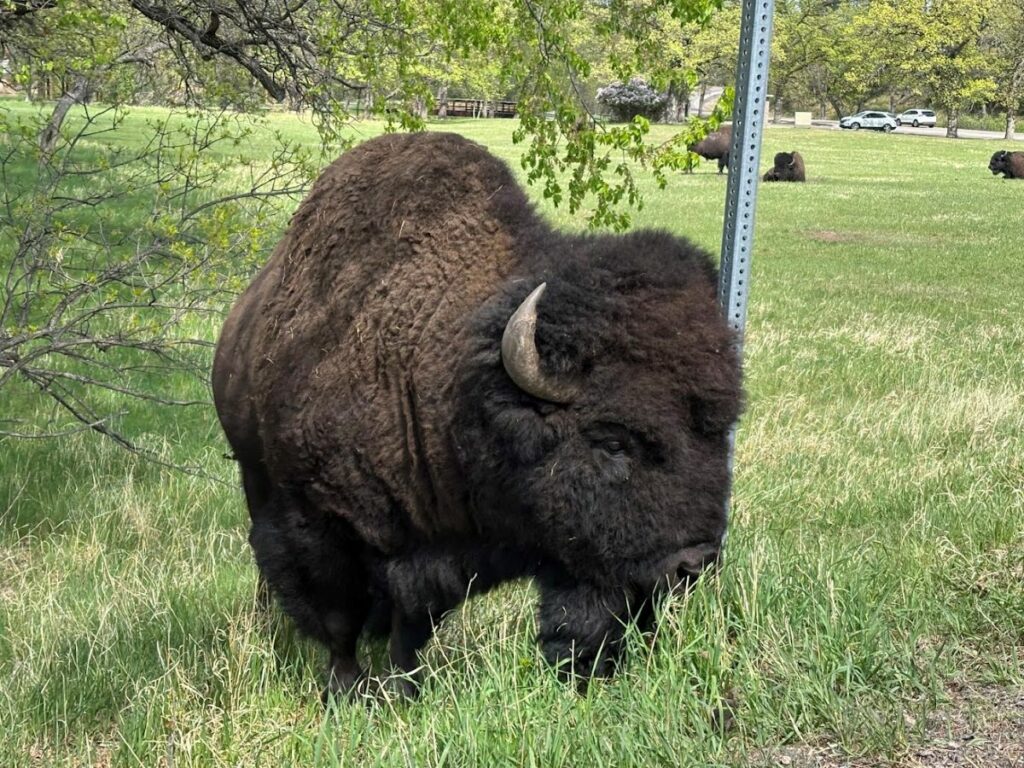
The average dinosaur weight, the researchers concluded, was 9,449 lbs. (4,282 kg). This is about the size of a small adult African elephant, one of the largest land animals alive today. However, they noted that the few extremely massive species—namely the long-necked sarupods—skewed this number. To get a better sense of what a “typical” dinosaur weighed, they looked at the median instead of the average. The median is the middle value when all dinosaurs are lined up by weight. It provides a more balanced picture when a few outliers are much larger or smaller than the rest. That number was about 1,389 lbs. (630 kg). This is roughly the size of an adult American bison, not too far off from Horner and Lessem’s estimate.
This research strongly suggests that the assertion of the average dinosaur being the size of a sheep, large dog, or small pony is incorrect.
Varying in Average Size
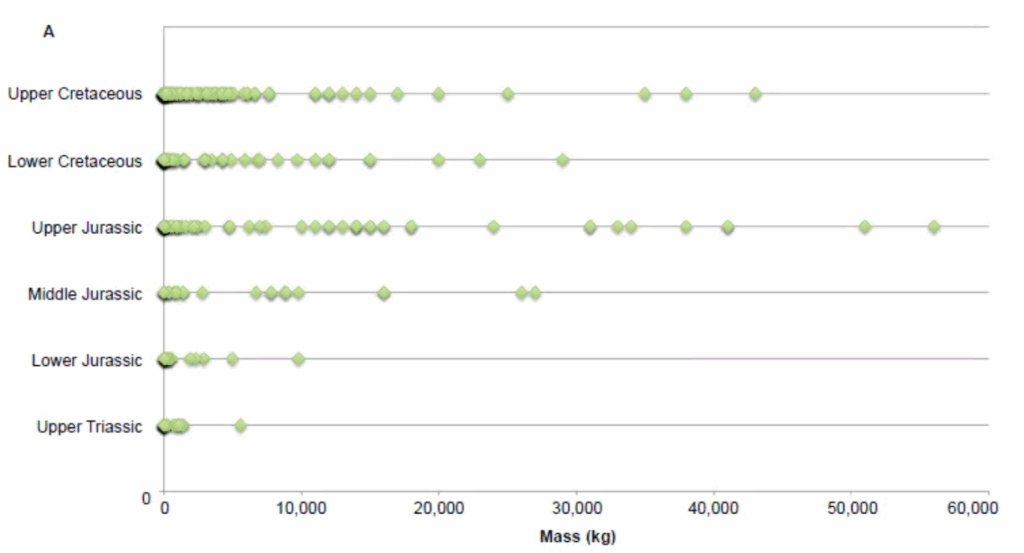
At first glance, there appears to be a gradual increase in the average size of dinosaurs ascending upward through their fossil record. Upper Triassic and Lower Jurassic layers are almost exclusively composed of smaller dinosaurs, with average weights of 1,268 lbs.and 2,418 lbs. respectively. This is followed by an increase in average size in the Middle Jurassic (13,248 lbs.), and capping off in the Upper Jurassic (21,751 lbs.). But then, it drops once again in the Lower Cretaceous (6,852 lbs.) and ends with a slight rise in the Upper Cretaceous (7,079 lbs.). What is causing this variance in the average size of dinosaurs?
Clarey and Tompkins revealed that the culprits behind this strange pattern were the sauropods. The presence of large sauropods in the Upper Jurassic skews the rest of the analysis, resulting in the resemblance of the pattern expressed above. When they removed sauropods from the analysis, the results even out with no universal or statistically significant increase in average dinosaur size across their fossil record.
Outstanding Questions
A common theme in science is that when one mystery is solved, several more tend to crop up. This is why science is a continuous process, ensuring that scientists always have more work in store for them in the future. This study is no different. As Clarey and Tompkins were able to figure out the average size of dinosaurs, their answer presented them with so many more questions. We’ll discuss a few of them below.
Why Are There So Few Medium-Sized Dinosaurs?
One of the more puzzling observations in this study was the sparsity of medium-sized dinosaurs. Most dinosaurs were either very small or very big, with not very many in between. Why was this?
One possibility, Clarey and Tompkins suggest, is that there were simply more available ecological niches for very small dinosaurs and very big dinosaurs. As such, dinosaurs flourished and multiplied in these niches, leaving hypothetical medium-sized dinosaur niches empty. Another hypothesis is that being very small or very big came with significant survival advantages. Small dinosaurs could have found it easier to hide from predators, or stay hidden from their prey. And larger dinosaurs could simply use their great size to repel potential threats, or take on similarly large prey.
A third possibility, proposed more recently and thus not discussed in this study, is that medium-sized dinosaur niches were often taken up not by medium-sized species, but juvenile members of larger species. For example, some have hypothesized that young Tyrannosaurus rex may have taken up the niche of mid-sized predators in their habitat.2
How Did Noah Fit the Dinosaurs on the Ark?
In order to explain how Noah could have possibly fit the dinosaurs on the Ark, creationists often appeal to an average size similar to that of a sheep. However, Clarey and Tompkins disproved this hypothesis, demonstrating that the average size of a dinosaur is much larger, about that of an American bison. Is there another explanation for how Noah accomplished this feat?
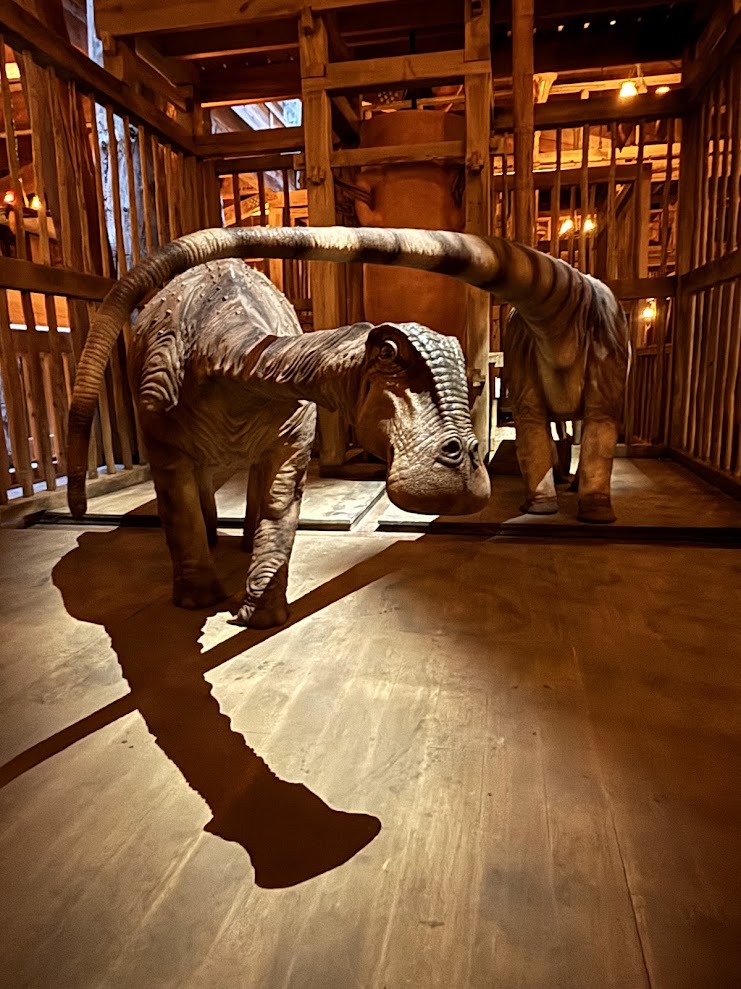
Clarey and Tompkins suggest that Noah simply took younger dinosaurs onto the Ark. Growth rings in dinosaurs’ bones can help scientists determine how fast these animals reached adult size. Many dinosaurs underwent a “teenage growth spurt,” just like humans. Clarey and Tompkins reason that, if Noah took dinosaurs onboard the Ark just prior to their growth spurt, they could reach sexual maturity very soon after leaving the Ark, ready to multiply and refill the earth (Genesis 8:17). Additionally, scientists believe many of the larger varieties of dinosaurs (namely, the sauropods) laid large clutches of eggs and left them to fend for themselves, like sea turtles do today. This means that their offspring would not require parental care, and be set and ready to go off on their own once the Flood was over.
Another note, not discussed in this paper, is that God did not need to bring the largest species of dinosaurs onto the Ark. God only told Noah that he would be housing every kind of land-dependent creature on the Ark, not every species. Therefore, this could mean that God brought smaller varieties to represent each kind on the Ark. There was simply no need to bring Patagotitan aboard; instead, God may have simply brought its smaller, horse-sized cousin, Magyarasaurus. Instead of bringing Tyrannosaurus on the Ark, God may have brought the deer-sized Asiatyrannus.
Conclusion
Though widely used, the idea that the average size of a dinosaur is small, perhaps equivalent to a sheep or small pony, is incorrect. While many of the dinosaurs were quite small, there were also many large species, which significantly increases the average size estimate.
Nevertheless, even though the average dinosaur size is considerably larger than previously thought, this does not pose problems for Noah’s care for these creatures aboard the Ark. There is simply no need to bring aboard the largest or oldest representatives of each species onto the Ark. The dinosaurs Noah and his family cared for may simply have been younger animals. Another possibility is that Noah only needed to take aboard the smaller representatives of each kind. In either scenario, the dinosaur pairs on the Ark would take up far less room and be much easier to care for during the year-long stay in the Ark.
Footnotes
- Clarey, T. L. , & Tomkins, J. P. (2015). “Determining Average Dinosaur Size Using the Most Recent Comprehensive Body Mass Data Set.” Answers Research Journal, 8, 85–93. ↩︎
- Woodward, H. N., Tremaine, K., Williams, S. A., Zanno, L. E., Horner, J. R., & Myhrvold, N. (2020). “Growing up Tyrannosaurus rex: Osteohistology refutes the pygmy ‘Nanotyrannus’ and supports ontogenetic niche partitioning in juvenile Tyrannosaurus.” Science Advances, 6(1), eaax6250. ↩︎

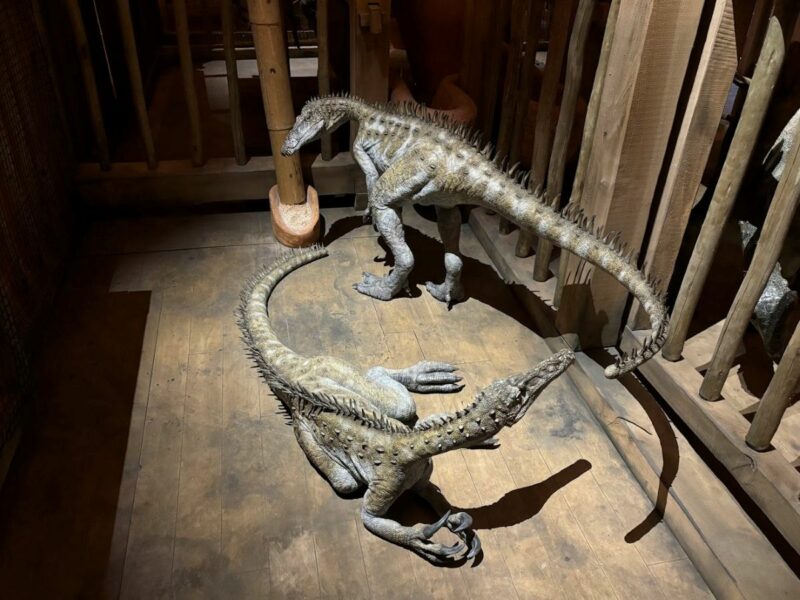
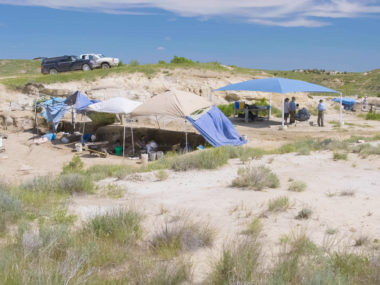

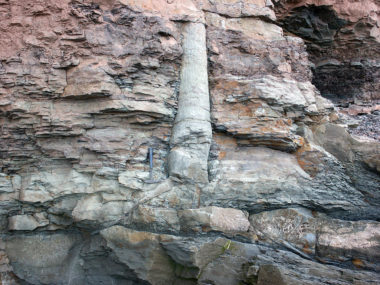


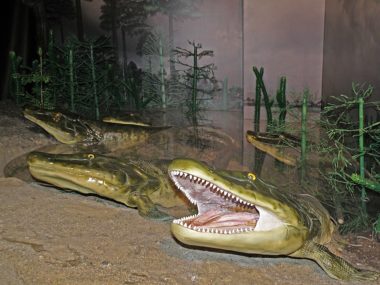




Thanks for for posting this article.
I also looked at the data published by Benson et al and plotted out the data for sauropods and theropods (excluding feathered theropods). However, I used a different underlying assumption which is, that all rocks with dinosaur fossils are post-flood.
This means that the dinosaurs on the ark would have been closely related to the smaller animals found in upper Triassic rocks. Therefore, the mean mass of dinosaurs on the ark would have been close to that of the Upper Triassic dinosaurs. This gives a much simpler explanation of the evidence within the post-flood diversification model.
You can see my discussion of this data here:
https://www.youtube.com/watch?v=QKAJXABXdqQ&t=95s